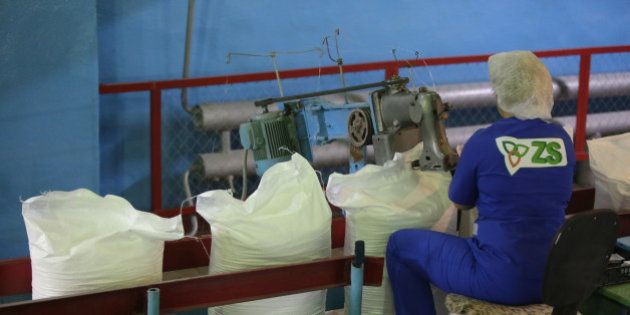
India's bid to compel producers to export millions of tonnes of surplus sugar will fail without significant subsidies or at least penalties for failing to comply, trade and industry sources told Reuters.
India has been pushing mills to sell sugar on the international market and use the proceeds to clear huge debts they owe farmers for sugarcane.
The world's number two producer, announced new rules last month making it compulsory for sugar producers to increase exports to at least 4 million tonnes in the present crushing season, to cut stockpiles.
Despite a rally in raw sugar futures to a 4-1/2-month peak this week, driven by a Brazilian gasoline price rise which was expected to boost demand for cane-based ethanol, raw sugar futures prices were still below the 13.5-14 cents per pound area seen as more likely to spur Indian exports.
“There is no export parity at the current level. The government has to provide subsidy to make exports viable. Without subsidy, mills can’t bear additional losses,” said Sanjeev Babar, managing director of Maharashtra State Co-operative Sugar Factories Federation.
The government gave a subsidy of 4,000 rupees a tonne for exports of raw sugar in 2014/15 year ended on Sept. 30 to help cut stockpiles after five years of surplus output.
“I contacted more than a dozen factories in Maharashtra to know whether they can supply raw sugar for exports in the next few months. No one is ready to produce raws for exports. They first want to know whether government is going to give them an export subsidy,” said a Mumbai-based dealer with global trading firm.
The government has not yet made clear whether it will extend subsidies in the 2015/16 year started on Oct.1.
Traders said the government plan also lacked teeth.
“The government has not drawn up penalties for non-compliance,” a senior Western analyst said.
The recent rally in local prices has made exports less lucrative for mills, the dealer said.
Indian sugar futures have surged a quarter since falling to their lowest level in over six year in late July.
Tom McNeill, director of Australia-based analyst Green Pool, predicted more modest Indian net sugar exports of 1.8 million tonnes in 2015/16, adding that he was "always a bit sceptical regarding the grand plans in India."
In the last crushing season which began on Oct. 1, 2014, India exported 1.3 million tonnes.
